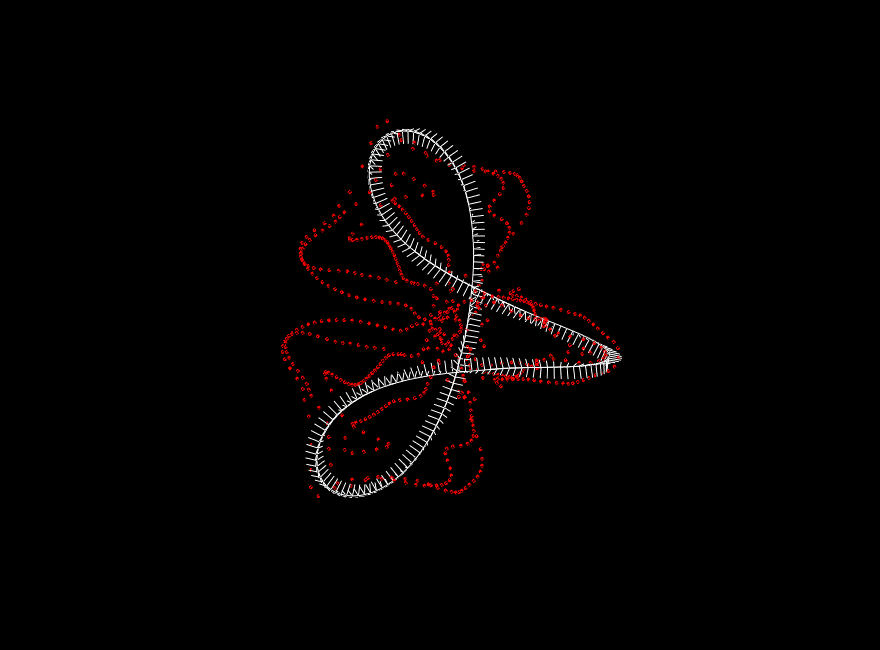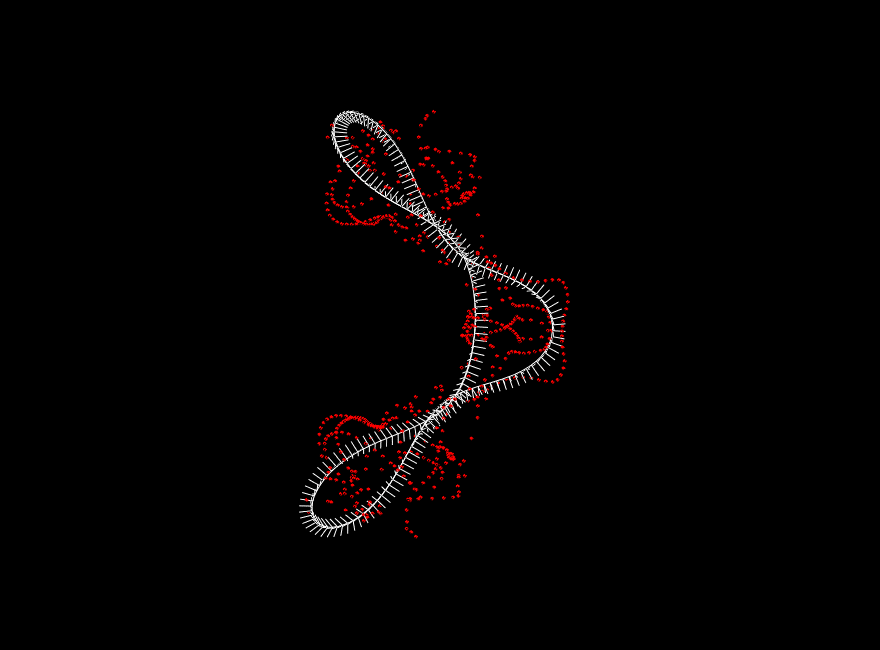A circular rod with twist and bend in fluid
Sookkyung Lim and Charles S. Peskin
|
The overwound or underwound double helix of DNA occurs in DNA transcription, DNA replication, and formation of DNA loops in protein-DNA interactions, which are essential in biological processes. In particular, the deformation of circular DNA molecules occurs in many prokaryotic and viral DNAs and also occurs in the mitochondria of eukaryotic cells. We consider an elastic rod in a closed circular configuration with a uniform twist that adds up to an integer number of full turns so that the triad configuration is smoothly periodic. Moreover this rod is embedded in the incompressible viscous fluid. The immersed boundary method is used to study the instability of a circular rod with twist and bend. Without twist, a closed circular rod gives an equilibrium configuration; that is, there is no net force or torque and it is stable. But with enough twist, the circular configuration becomes unstable, and the rod relaxes to a stable coiled configuration. References: S. Lim, A. Ferent, X.S. Wang, and C.S. Peskin, Dynamics of a closed rod with twist and bend in fluid, SIAM Journal on Scientific Computing, 31(1):273-302 (2008) |
n=200, bend modulus=0.3, twist modulus=0.2, stretch modulus=54, p=number of twist, e=perturbation parameter
|
|
|
|
|
 |
 |
 |
 |
|
|
|
|
 |
 |
 |
|
|
|
 |
 |
|
|
 |
SELF-CROSSING: n=100, bend modulus=0.3, twist modulus=0.2, stretch modulus=54, p=number of twist
|
|
|
|
 |
 |
 |